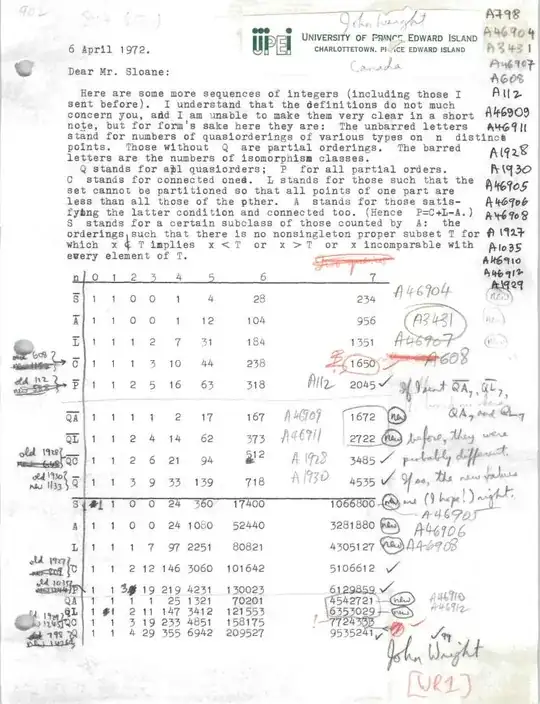I apologize that this is not a full answer to your question, but rather an attempt to narrow its focus in a way that I hope is useful, and which at least leads to some interesting numerical data.
Preorders (i.e., quasiorders: sets equipped with a transitive, reflexive binary relation) are categories of the simplest kind, i.e., categories which have at most one morphism from any given object to any other given object. Perhaps it is reasonable to take, as a first approximation to your question, the question of how likely it is for a random preorder to be connected. To make the question precise: for each positive integer $n$, let $\bar{P}(n)$ be the number of isomorphism classes of preorders with $n$ elements, and let $\bar{C}(n)$ be the number of isomorphism classes of connected preorders with $n$ elements. What is the ratio $\bar{C}(n)/\bar{P}(n)$, and does the limit $\lim_{n\rightarrow\infty}\bar{C}(n)/\bar{P}(n)$ perhaps converge?
From the OEIS's website, here is a type-written letter from John Wright to Neil Sloane from 1972, containing calculations of $\bar{C}(n)$ and $\bar{P}(n)$ for $n=1, \dots ,7$: 
I believe that the handwriting in the margins is Sloane's. I am writing $\bar{P}$ where Wright wrote $\bar{Q}$, because I think of $P$ standing for "preorders" (while Wright wrote $Q$ for quasiorders and $P$ for partial orders). Further calculations out to $n=16$ are found in the OEIS entries here http://oeis.org/A001930 , for $\bar{P}(n)$, and here http://oeis.org/A001928 , for $\bar{C}(n)$. (You will notice from the titles of these OEIS entries that they are about counting topologies, not preorders. It is a classical fact from combinatorics that every preordering on a set gives rise to a topology on that set, and for finite sets, in fact the topology carries the same data as the preordering. So in fact our question becomes: "what is the likelihood that a randomly-chosen homeomorphism class of finite topological spaces is connected?")
Here are some computed values of the ratio $\bar{C}(n)/\bar{P}(n)$, using the OEIS's tables:
- $\bar{C}(1) = 1, \bar{P}(1) = 1$, with ratio $1$.
- $\bar{C}(2) = 2, \bar{P}(2) = 3$, with ratio approx. $0.667$.
- $\bar{C}(3) = 6, \bar{P}(3) = 9$, with ratio approx. $0.667$.
- $\bar{C}(4) = 21, \bar{P}(4) = 33$, with ratio approx. $0.636$.
- $\bar{C}(5) = 94, \bar{P}(5) = 139$, with ratio approx. $0.676$.
- $\bar{C}(6) = 512, \bar{P}(6) = 718$, with ratio approx. $0.713$.
- $\bar{C}(7) = 3485, \bar{P}(7) = 4535$, with ratio approx. $0.768$.
- $\bar{C}(8) = 29515, \bar{P}(8) = 35979$, with ratio approx. $0.820$.
- $\bar{C}(9) = 314474, \bar{P}(9) = 363083$, with ratio approx. $0.866$.
- $\bar{C}(10) = 4255727, \bar{P}(10) = 4717687$, with ratio approx. $0.902$.
- $\bar{C}(11) = 73831813, \bar{P}(11) = 79501654$, with ratio approx. $0.929$.
- $\bar{C}(12) = 1653083021, \bar{P}(12) = 1744252509$, with ratio approx. $0.948$.
- $\bar{C}(13) = 47941962135, \bar{P}(13) = 49872339897$, with ratio approx. $0.961$.
- $\bar{C}(14) = 1803010446411, \bar{P}(14) = 1856792610995$, with ratio approx. $0.971$.
- $\bar{C}(15) = 87882300251730, \bar{P}(15) = 89847422244493$, with ratio approx. $0.978$.
- $\bar{C}(16) = 5543501326580737, \bar{P}(16) = 5637294117525695$, with ratio approx. $0.983$.
This numerical data gives a certain impression that "a randomly chosen isomorphism class of finite preorder is connected," but only an impression. To really know anything, one ought to show that $\lim_{n\rightarrow\infty}\bar{C}(n)/\bar{P}(n)$ converges to some positive number, and to get some bounds on that number. Perhaps the combinatorialists have already done this: I hope that people who know some combinatorics (which unfortunately does not include me) will weigh in on this.
I am sorry that this is at best only a very partial answer to the question. I would have left it as a comment if it weren't far too long.
